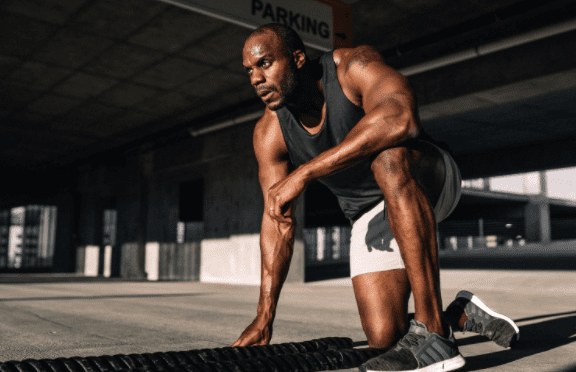The Effects of Cannabis Compounds on Elite Athletes
21/03/2021
In recent years, scientific research has begun to explore the viability of non-psychoactive cannabis compounds as natural alternatives to lab-synthesized drugs. As their benefits become increasingly established in scientific literature, standout athletes such as Olympian Michael Phelps and NFL Hall of Famer Ron Gronkowski are driving interest in cannabis compounds — specifically cannabinoids and terpenes — further into the mainstream by crediting them as personal health supplements.
What are cannabinoids and terpenes?
Cannabinoids are the primary natural compounds found within the cannabis plant. While tetrahydrocannabinol (THC) is the single most abundant cannabinoid in nearly all strains of marijuana, non-psychoactive varieties of cannabis such as hemp are dominated by cannabidiol (CBD). Other examples of cannabinoids include cannabigerol (CBG), cannabichromene (CBC) and cannabicyclol (CBL).
Terpenes are naturally occurring aromatic compounds found in marijuana, as well as practically all plant life. While terpenes serve to protect these plants from predators and inconducive weather at critical stages of their growth cycles, they are primarily known to us for the distinctive flavors and aromas they impart to anything they’re infused in. Examples of terpenes include beta-caryophyllene, myrcene and linalool.
Both CBD and terpenes have been shown to have significant medicinal and therapeutic potential in scientific research. Their ability to exert a modulatory influence on a network of receptors throughout the body — known as the endogenous cannabinoid system (ECS) — regulates the production and uptake of neurotransmitters into the brain. This can produce a number of benefits, including analgesic, bronchodilative and even anxiolytic effects.
Because of their ability to improve symptoms of a variety of physical and physiological conditions, cannabis compounds like CBD and terpenes have the potential to produce impressive synergistic entourage effects that can improve performance and speed up recovery in high-level athletes. Let’s look at some of the most notable ways below, in no particular order.
Relief from Injury-Associated Chronic Pain Conditions
Athletes who undergo heavy or high-intensity interval training (HIIT) such as bodybuilders and sprinters commonly suffer from chronic pain conditions caused by injuries like pulled muscles, torn ligaments and slipped discs. After a rehab session with a sports physician, day to day living throughout the convalescent phase of recovery can be complicated by chronic pain without the constant use of narcotic painkillers — many of which contain harmful or addictive substances such as opioids.
CBD is already commonly used as a natural alternative to pain medication by millions around the world, with its viability as an analgesic backed by numerous studies and countless product reviews online. An infusion of palliative terpenes like myrcene can also increase the overall effect of CBD tinctures, roll-ons and recovery balms.
Reduction of Sport-Related Inflammatory Disorders (Without the Side Effects)
Before CBD and select terpenes were studied for their ability to control pain and inflammation from common conditions like tendonitis or bursitis, contact athletes such as kickboxers and wrestlers had to rely on what are known as non-steroidal anti-inflammatory drugs (or NSAIDs) to keep swelling under control. The problem with NSAIDs is that they are notorious for producing a range of severe to debilitating side effects.
Side effects from NSAIDs include acute migraines, indigestion, diarrhoea and even stomach ulcers — any of which can severely affect any athlete’s ability to perform. Non-psychoactive cannabis compounds introduce a viable alternative to NSAIDs with virtually no side effects, with particular appeal to athletes due to their predisposition toward all-natural dietary and supplemental regimens.
Promotion of Homeostasis & Quality Sleep Cycles
“Growth occurs outside of training” is a time-tested and universally-accepted aphorism in the field of athletics, and with good reason. Crucial aspects of any individual’s progression as an athlete take place not in the gym or on the field, but during sleep. This includes muscle growth, cell regeneration, and the development of the critical mind-muscle connections that result from drilling movements and play formations in practice.
As of this writing, CBD is commonly prescribed to patients with conditions that lead to poor sleep cycles and insomnia, ranging from hormonal imbalances associated with mood or anxiety disorders to physiological conditions like restless leg syndrome (RLS). Sedative strains of cannabis loaded with mellowing terpenes like linalool are also a common medical marijuana prescription for patients with stress or pain-related insomnia.
Calming of Muscle Spasms to Improve Training & Performance
A common cause of serious injury from physical athletes in precision sports like gymnastics and powerlifting is muscle spasms — that is the sudden or continuous involuntary movement in one or more muscles caused by overtraining, stress, poor recovery or dehydration. A muscle spasm in the middle of a maximal weight compound lift or high-speed pommel horse technique can mean anything from a torn muscle to a comminuted fracture, suspending prospective athletic careers for months at a time.
CBD’s viability as a potent spasmolytic was highlighted in the American mainstream when it made national news in 2013 for stopping the seizures of a child with Dravet syndrome. Several studies and four years later, CBD was tested on over 120 patients with Dravet syndrome between the ages of 2 and 18 — slashing seizures by 39% during the two-week study.
By supplementing with CBD, athletes with mild to chronic muscle spasms can add to their existing preventative repertoire (back, elbow and knee braces, stretching schedules etc) to significantly reduce the likelihood of training injuries sustained from inopportune muscle spasms.